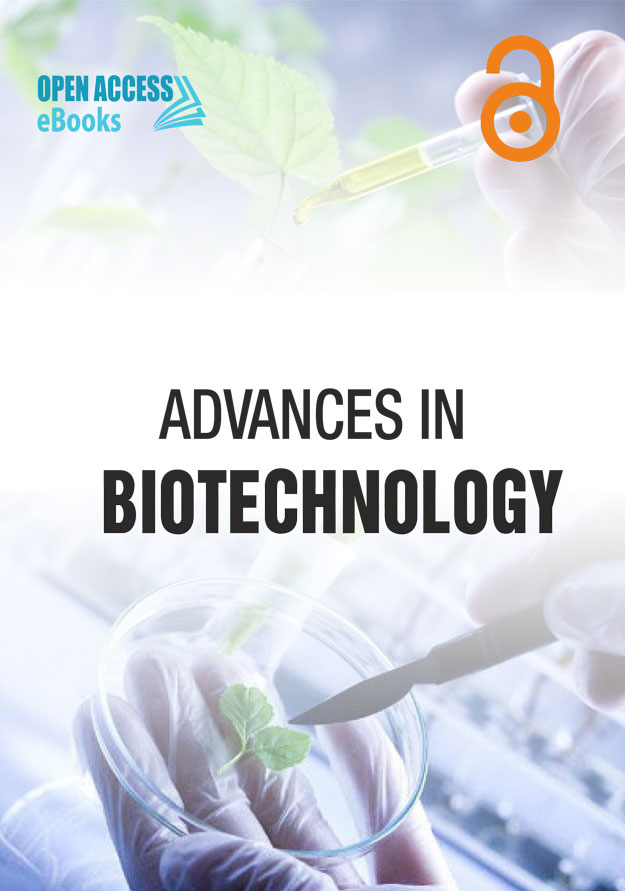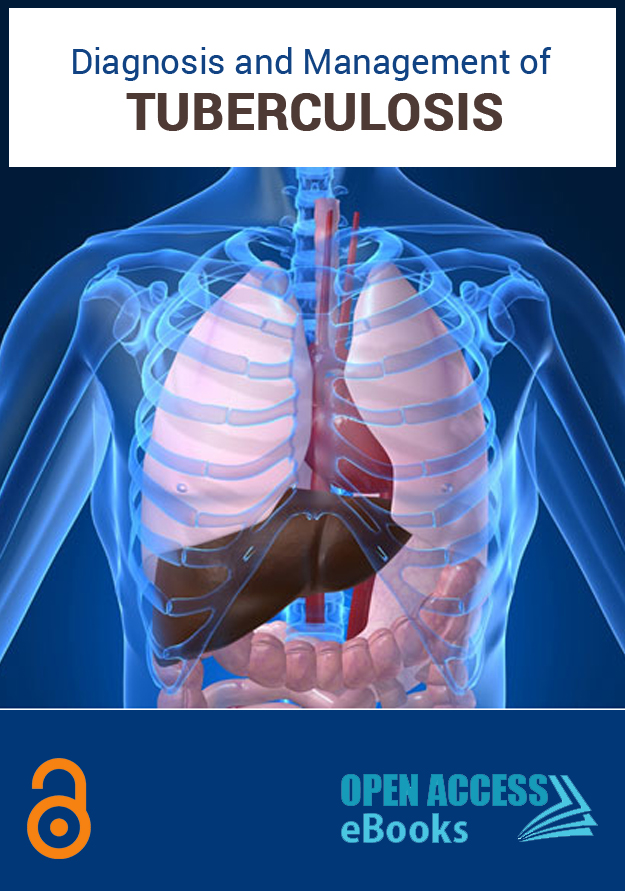
ISBN: 978-81-935757-0-3
Editors:
1. Asis Datta
2. Md Fakruddin
3. Hafiz Muhammad Nasir Iqbal
4. Jayanthi Abraham
Biotechnology is the use of living organisms, biological processes or systems to manufacture/develop different drugs or products to improve the quality of life. The science of biotechnology is divided into four categories: red, white, green & blue.
Open Access eBooks is inviting researchers working in the areas of Biotechnology to submit their book chapter for the publication in volume 1 of an eBook ADVANCES IN BIOTECHNOLOGY.
All book chapters undergo review process and published content is available in PDF & HTML formats.
Benefits of publishing with us:
Universal Access: eBooks published in Open Access eBooks gain international visibility. No region barriers and content is accessed by everyone across the world from our website. We also deposit published eBooks in different databases.
Freely Available: Open Access eBooks follows the principles of Open Access and the content is available to the readers without any cost. Readers can read, share, and store the published ebooks/book chapters.
Copyright with Authors: As an eBook publisher, we serve researchers in publishing their valuable work after the stringent review process. However, copyright lies with authors. We follow the CC-BY-NC-ND license (https://creativecommons.org/licenses/by-nc-nd/3.0/).
Different Formats: We provide eBooks in PDF and HTML formats. Both formats are user friendly and can act as per the user requirements. We put our efforts to provide other formats in future.
For more information, contact info@openaccessebooks.com
Published Chapters:
Microbial diversity and syntrophic acetate degradation to methane in a high-temperature petroleum reservoir
Author(s): Tamara N. Nazina*; Natalya M. Shestakova; Valery S. Ivoilov; Tatiana P. Tourova; Qingxian Feng; Andrey B. Poltaraus
The results of our investigation on the microbial community of the high-temperature Dagang oilfield (P.R. China) are summarized. Detailed experimental data are provided on syntrophic acetate degradation by thermophilic associations, on the isolation of pure cultures from these associations, their physiological
characteristics, and reconstruction of microbial interactions during acetate degradation to methane. The microbial community of the high-temperature Dagang oilfield was investigated
by culture-based, radioisotope, and 16S rRNA gene techniques. Cultivable microorganisms (aerobic oil-oxidizing, anaerobic fermentative, sulfate-reducing, and methanogenic) were found
in formation water. Methanogenic enrichments were obtained in media both with Н2+CO2 and acetate. The process of methane production in formation waters was also registered by
radioisotope methods with Na214CO3 and 14CH3COONa. However, pure cultures of thermophilic aceticlastic methanogens were not obtained. The 16S rRNA gene analysis of the formation water and methanogenic enrichments revealed that H2-utilizing methanogens of the genus Methanothermobacter were predominant in the archaeal libraries (97% of archaeal clones). Phylotypes of acetate-utilizing methanogens were detected in the libraries only after the acetate content in formation water was increased. Bacterial phylotypes belonged to the known
fermentative (Thermoanaerobacter, Thermoterrabacterium, Thermovenabulum, Fervidobacterium, Thermotoga, Dictyoglomus, Pedobacter, and Dysgonomonas), sulfate-reducing
(Thermodesulfovibrio and Desulfotomaculum), and syntrophic (Thermacetogenium and Thermovirga) bacteria. Pure cultures of Methanothermobacter sp. and Thermoanaerobacter ethanolicus
were isolated from thermophilic methanogenic enrichments grown on acetate. The binary culture combining both strains carried out the reaction of syntrophic acetate degradation to
methane. The data obtained show that syntrophic associations may contribute significantly to methane production in high-temperature petroleum reservoirs. One of important ecological
function of fermentative bacteria of the Thermoanaerobacter–Caldanaerobacter group is their ability to carry out syntrophic acetate oxidation to Н2 and СО2, which is then reduced to
methane by hydrogenothrophic methanogens.
Limitations in the tissue culture of Indian sandalwood tree (Santalum album L.)
Author(s): Qingwei Cheng; Yueya Zhang; Meiyun Niu; Haifeng Yan; Xinhua Zhang; Jaime A. Teixeira da Silva*; Guohua Ma*
The tissue culture of Indian sandalwood (Santalum album L.) has been extensively studied, mainly for its rapid propagation technology. Santalum album is believed to be the first the first woody species for which somatic embryogenesis was reported. Despite significant advances, there are still many problems blocking the two basal modes of regeneration, namely, shoot organogenesis and somatic embryogenesis, regardless of other modifications such as protoplast culture or genetic transformation. Without doubt, studies on shoot organogenesis or/and somatic embryogenesis from explants to induce adventitious shoots or somatic embryos of all stages will be continue to be published, but reliable and efficient solutions to the limitations of S. album tissue culture are needed. This review highlights these problems, and introduces some physiological and biochemical changes during shoot organogenesis and somatic embryogenesis. Finally, we discuss future research directions for the tissue culture of Indian sandalwood, aiming at a call for more studies that address these problems which hinder the full application of sandalwood tissue culture.
Microorganisms in environmental biotechnology application
Author(s): Awanish Kumar*; Dharm Pal
Microorganisms are essential to our very existence. They are ubiquitous, found in common environments such as soil, water, and air as well as exotic locales as diverse as deep sea hydrothermal vents and soda lime lakes. They are abundant in natural environments associated with wide range of activities like fuel and biomass production, mineral, nutrient recycling and energy recovery etc. Concerns of microbial studies have been identified as important area where background information is essential for recovery of natural component for our use. Useful applications of microbes, study of environment balance and their correlation are valuable for living organism. Microbes are used for environmental restoration and biomediation processes which are needed to lead more sustainable lifestyles and use of resources more justifiably. Microbes are everywhere in the biosphere, and their presence invariably affecting the environment. The effects of microorganisms on environment can be beneficial or harmful. Since a good part of this text concerns with a discussion of the beneficial activities of microorganisms as they relate to human welfare. Microorganisms are very diverse and their jobs are highly specific in the environment. Recognizing the numerous invaluable functions of microbes, this book chapter give the information about the environment and role of microbes in various applications like biomass degradation, fuel production, mineral recovery and nutrient recycling.
RNAi based strategies for enhancing plant resistance to virus infection
Author(s): Veena Sinha; Abhishek Anand; Sunil K Mukherjee; Neeti Sanan-Mishra*
Viruses are the most potent parasitic entities that are detrimental to all animal and plant groups with no exceptions known so far. The viral genome though small is sufficient for sustaining the infection and its propagation inside the host organism. The sessile inhabitants of the plant kingdom have developed their strategies to counter this threat too with variable degree of success. The most important and significant of these strategies involves the RNA silencing mechanism. The viruses have evolved successfully in parasitizing and evading this plant defense strategy, by their ability to encode various "suppressor" molecules, which are able to target different components of the silencing pathway in plants. Besides suppression activity, these proteins also perform functions essential for virus multiplication and pathogenicity. In this chapter we briefly discuss about the plant defense strategies with the help of RNAi mediated processes with special focus on Virus Induced Gene Silencing (VIGS) and the viral suppressors as countermeasures to combat this strategy, while describing the probable mechanisms of suppressor action and the variations that exist in their mode of action. We have also tried to elucidate certain assays that are commonly used to detect and quantify the activity and strength of these suppressor proteins. Then, we describe the specific applications of the RNAi based strategies used to counter virus attack.
A comparative in-vitro cytotoxicity study of biogenic and chemically synthesized metal (Ag and Au) nanoparticles
Author(s): Girilal M*; Somasunder SS; A Mohammed Fayaz; PT Kalaichelvan
In the current scenario, the most frequently asked query regarding the metal nanoparticles is related to its toxic effects despite of their vast potential application in the field of health, pharmaceutical and medicine. Even though there are lots of studies carried out focusing on the toxicity of metal nanoparticles, a proper comparative study of biologically and chemically synthesized metal nanoparticles is lacking. The main aim of the study is a comparative morphological, biological and genotoxic studies of biogenic as well as chemically synthesized silver and gold nanoparticles on the cell line- African monkey kidney cells (Vero) and human spermatozoa. Chemically synthesized nanoparticles had significant cytotoxic activity leading to the cell death and the comet assay in the spermatozoa make us clear that it creates significant DNA damage too. The release of lactate dehydrogenase, nitric oxide and reactive oxygen species (ROS) after its exposure to the metal nanoparticles finally resulting damage to most biomolecules, including DNA and protein points to the effect of biogenic and chemically synthesized nanoparticles on different biological system.
Bioprospecting of actinomycetes: Computational drug discovery approach
Author(s): Jayanthi Abraham*; Ritika Chauhan
There is an urgent need for new drugs with increasing threat posed by multidrug resistant bacteria. Among the various sources of natural products actinomycetes hold prominent position due to their diversity and proven ability to produce carried out focusing on the toxicity of metal nanoparticles, a proper comparative study of biologically and chemically synthesized metal nanoparticles is lacking. The main aim of the study is a comparative morphological, biological and genotoxic studies of biogenic as well as chemically synthesized silver and gold nanoparticles on the cell line- African monkey kidney cells (Vero) and human spermatozoa. Chemically synthesized nanoparticles had significant cytotoxic activity leading to the cell death and the comet assay in the spermatozoa make us clear that it creates significant DNA damage too. The release of lactate dehydrogenase, nitric oxide and reactive oxygen species (ROS) after its exposure to the metal nanoparticles finally resulting damage to most biomolecules, including DNA and protein points to the effect of biogenic and chemically synthesized nanoparticles on different biological system.

